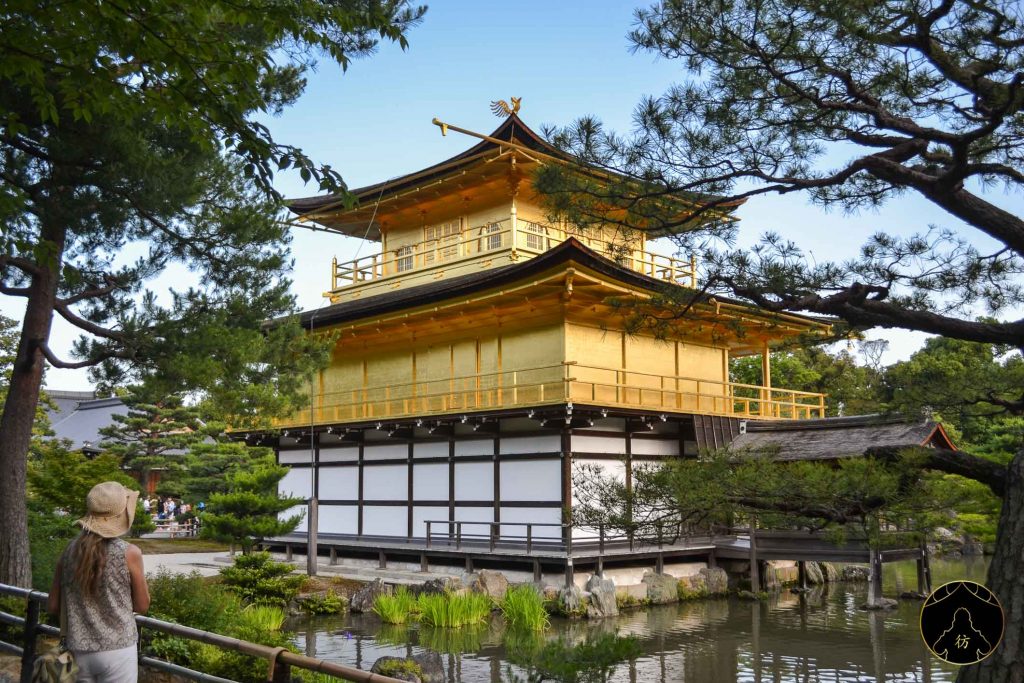Let’s go on a cultural trip to Japan and visit 10 magnificent temples! If you are planning your trip to Japan, try covering as many of the temples listed here as you can.
Key selection criteria included the sites’ popularity but also my own judgment. So this top 10 is at the same time a selection of well-known temples but also ones that are not so popular.
More than just places of worship, Japanese temples are cultural monuments, and exploring them is an experience you shouldn’t miss out on when traveling to the Land of the Rising Sun. Before getting into this top 10, I would like to point out that I listed only Buddhist temples and not Shinto shrines, which I will talk about in another blog post.
Without further ado, let’s start our list with what’s probably considered to be the most famous temple in Japan.
1. Senso-ji (Tokyo)
The Sensoji Temple is located in the traditional district of Asakusa and is the oldest temple in Tokyo! It was built in 645 AD and has of course changed over time. It is a very popular attraction in Tokyo visited by both tourists and locals.
To avoid crowds, visit it early in the morning or late in the afternoon. At night, the lights at the Sensoji take the atmosphere of the temple to another level of amazingness so nighttime is a great time to visit it. There are plenty of small restaurants near the temple where you can have dinner or a drink after your visit.
2. Gotokuji (Tokyo)
We’re still in Tokyo and we’re visiting the beautiful Gotokuji. Its main feature is that it contains hundreds of small porcelain statues of Maneki Neko. The Maneki Neko is a very cute cat raising his paw to greet people. It is said that these cats are powerful charms so if you are a little superstitious, buy a tiny of Maneki Neko statue and place it with the others in this temple.

In addition to its cat statues, the Gotokuji Temple has an impressive 3-storey pagoda. The best time to go there is probably during autumn because there are many maple trees with pretty Momiji (maple leaves turning red around October and November).

3. Kenchoji (Kamakura)

We’re in the city of Kamakura which is south of Tokyo to visit the Kenchoji Temple. Kamakura was a former capital of Japan so many temples were built during the Kamakura period. One of my favorites is Kenchoji because there is a beautiful sakura (cherry blossoms) alley at its entrance.
4. Kinkakuji (Kyoto)

We’re now in Kyoto which is the center of traditional culture in Japan. Kinkakuji, also known as the Golden Pavilion, is one of its must-visit temples. The main building of the temple is covered with a thin layer of gold, which represents longevity in Buddhism. You cannot visit the interior of Kinkakuji but just standing outside the temple is, all by itself, an experience to be lived.

5. Ginkakuji (Kyoto)

We’re still in Kyoto, visiting Kinkakuji’s little sibling, Ginkakuji. The Ginkakuji is also known as The Silver Pavilion and the contrast between both temples is conspicuous. The Kinkakuji is more flashy and much more luxurious while the Ginkakuji seems more authentic, typical of the minimalist and sleek Japanese style. If I had to choose, I’d go for Ginkakuji but I recommend you visit both!

6. Todaiji (Nara)

We’re still in the Kansai region and we’re visiting the nearby city of Nara. It is famous for the numerous deer wandering around the city but Nara is also home to many Buddhist temples including the beautiful Todaiji. It is known for its daibutsu which is a large Buddha statue. It measures no less than 14 meters high and its temple is a UNESCO World Heritage Site.

7. Shitennoji (Osaka)

We’re now in Osaka, my favorite city in Japan! Although it is best known for its crazy atmosphere and its street food, you can also visit beautiful temples there like Shitennoji. The site is huge and you have access to many of the temple’s beautiful wooden buildings.

8. Danjo Garan (Koyasan)

Let’s climb up Mount Koya, commonly known as Koyasan. It is one of the most important Buddhist religious centers in Japan and there are many old temples there including my favorite: Danjo Garan. Its red stupa which you see in the background of the picture above is 49 meters high. The least I can say is that it is a humbling monument.
9. Kimiidera (Wakayama)

Let’s dive into a sea of cherry blossoms as we explore Kimiidera Temple in Wakayama. Of course, I visited this place in the spring during the cherry blossom season in Japan and it was magical!
The temple is located on a hill in Wakayama and you have to climb many steps to visit its different structures. If you’re close by, make sure to stop by Kimiidera. 🙂
10. Chusonji (Hiraizumi)

Last but not least on this list of the 10 most beautiful temples of Japan is another not-so-popular temple. The Chusonji Temple is in Hiraizumi, Iwate Prefecture, and is a shrine (no pun intended!) for Buddhism in Japan. It includes the Konjiki-dō which is inside the building you see in the picture above. It is actually the mausoleum of a local clan leader and is covered in gold.
If you can, visit the temple in winter because Iwate looks even nicer under the snow.

That’s it for my 10 favorite temples in Japan! It is always a bit tough to select only 10 places because there are so many incredible temples to visit in Japan.
I hope that this blog post will help you better plan your trip to Japan. By the way, what’s your favorite temple? Let me know in the comments below.
See you around,
MF







